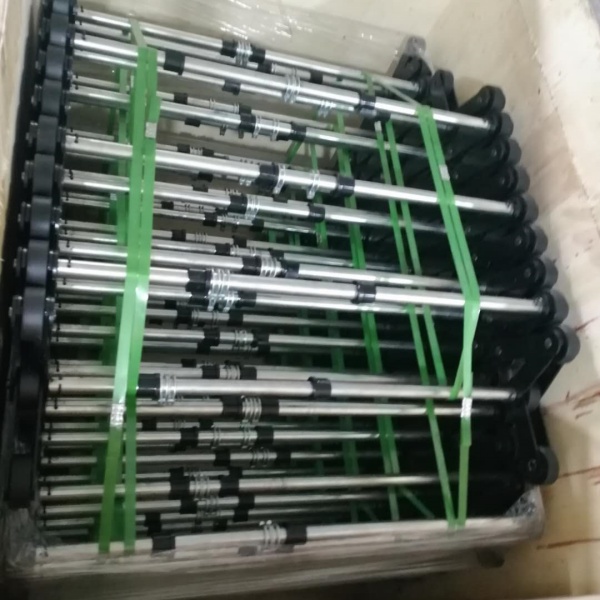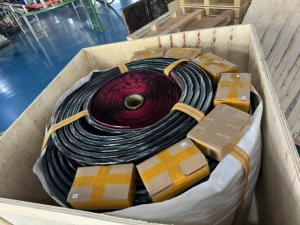How to maintain escalator step chains
Escalator Step Chain Maintenance Guide
The step chain is the core transmission component of an escalator, directly affecting operational smoothness and safety. Regular maintenance can extend its service life and reduce failure risks. Below are professional maintenance methods:
---
I. Daily Inspection and Cleaning
1. Chain Cleaning
2. Frequency: At least once per month (increase frequency for high-traffic areas).
- Method:
- Use an industrial vacuum to remove dust and grease from chain gaps.
- Wipe chain plates and rollers with non-woven fabric + specialized cleaner (e.g., WD-40) to prevent metal debris buildup.
2. Chain Condition Check
- Visual Inspection:
- Check for deformed or cracked chain plates.
- Inspect roller wear (replace if diameter reduction exceeds 1mm).
- Manual Test:
- Lift the chain to check slack (normal sag: 5-10mm; adjust tension if exceeded).
---
II. Lubrication Maintenance
1. Lubricant Selection
- Recommended Types:
- High-temperature chain oil (e.g., Mobil SHC 634, Shell Gadus S2 V220).
- Avoid ordinary grease (attracts dust and causes clogging).
2. Lubrication Steps
1. Clean the Chain: Ensure no old grease residue remains.
2. Apply Lubricant:
- Use a chain oil spray gun to evenly coat chain joints and roller bearings.
3. Operate Escalator: Run at low speed for 5 minutes to allow oil penetration.
3. Lubrication Intervals
| Environment | Frequency |
| Shopping malls/subways | Every 3 months |
| High temp/humidity areas | Every 2 months |
| Ultra-high traffic (e.g., airports) | Monthly |
---
III. Tension Adjustment
1. Inspection Standard
- Chain sag (deflection) should be 5-10mm (refer to manufacturer’s manual).
- Over-tightening increases wear; excessive slack risks chain skipping.
2. Adjustment Method
1. Locate the tensioning device (usually inside the truss at the escalator’s base).
2. Adjust tension bolts with a wrench:
- Clockwise: Tighten the chain.
- Counterclockwise: Loosen the chain.
3. Manually test by turning the drive chain to ensure smooth operation.
---
IV. Key Precautions
Safety First:
- Power off and lockout/tagout (LOTO) before maintenance to prevent accidental startup.
- Never touch moving chains with bare hands.
Avoid Low-Quality Lubricants:
- Inferior oils oxidize quickly, accelerating chain wear.
Environmental Adaptability:
- Use anti-rust lubricants (e.g., molybdenum disulfide-based) in humid environments.
- Select high-temperature-resistant oils (drop point >200°C) for hot areas.
---
V. Troubleshooting Common Issues
Issue 1: Chain Noise
- Cause: Lack of lubrication, roller damage, or improper tension.
- Solution: Clean, relubricate, and inspect rollers.
Issue 2: Excessive Chain Elongation
- Standard: Replace if elongation exceeds 3% (measure 10 chain links vs. new chain).
- Prevention: Regular tension adjustments and avoid overloading.
Issue 3: Lubrication Failure
- Symptoms: Dry chains, hardened grease buildup.
- Solution: Thoroughly clean with chain degreaser and re-lubricate.
---
VI. Professional Maintenance Advice
- Annual Comprehensive Inspection: Includes chain flaw detection (magnetic particle testing) and bearing replacement.
- Use OEM Parts: Non-standard chains may cause compatibility issues.
With proper maintenance, step chains can last 8-10 years (normal conditions) or 5-7 years (high-load environments). If lacking technical expertise, hire certified maintenance providers.

